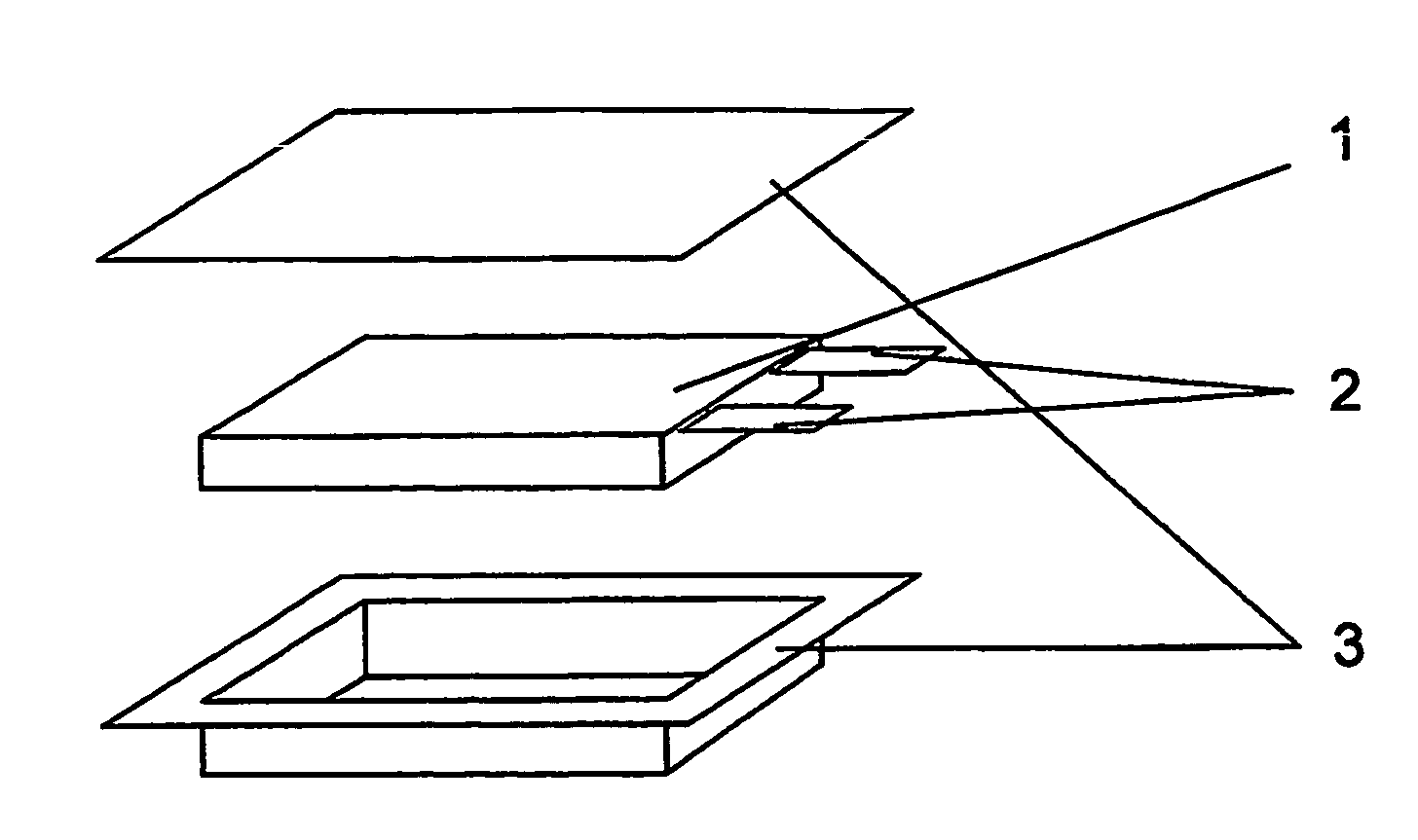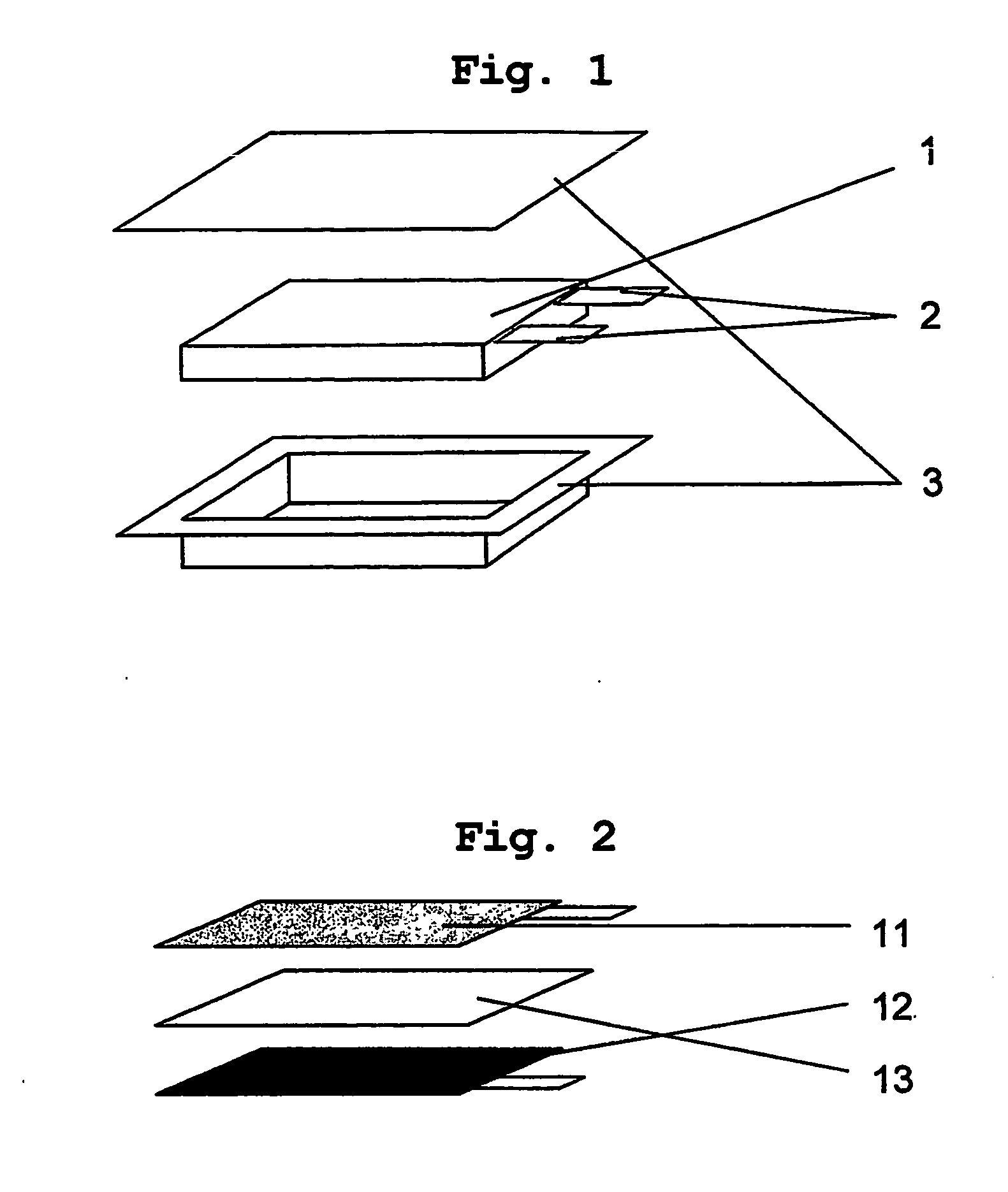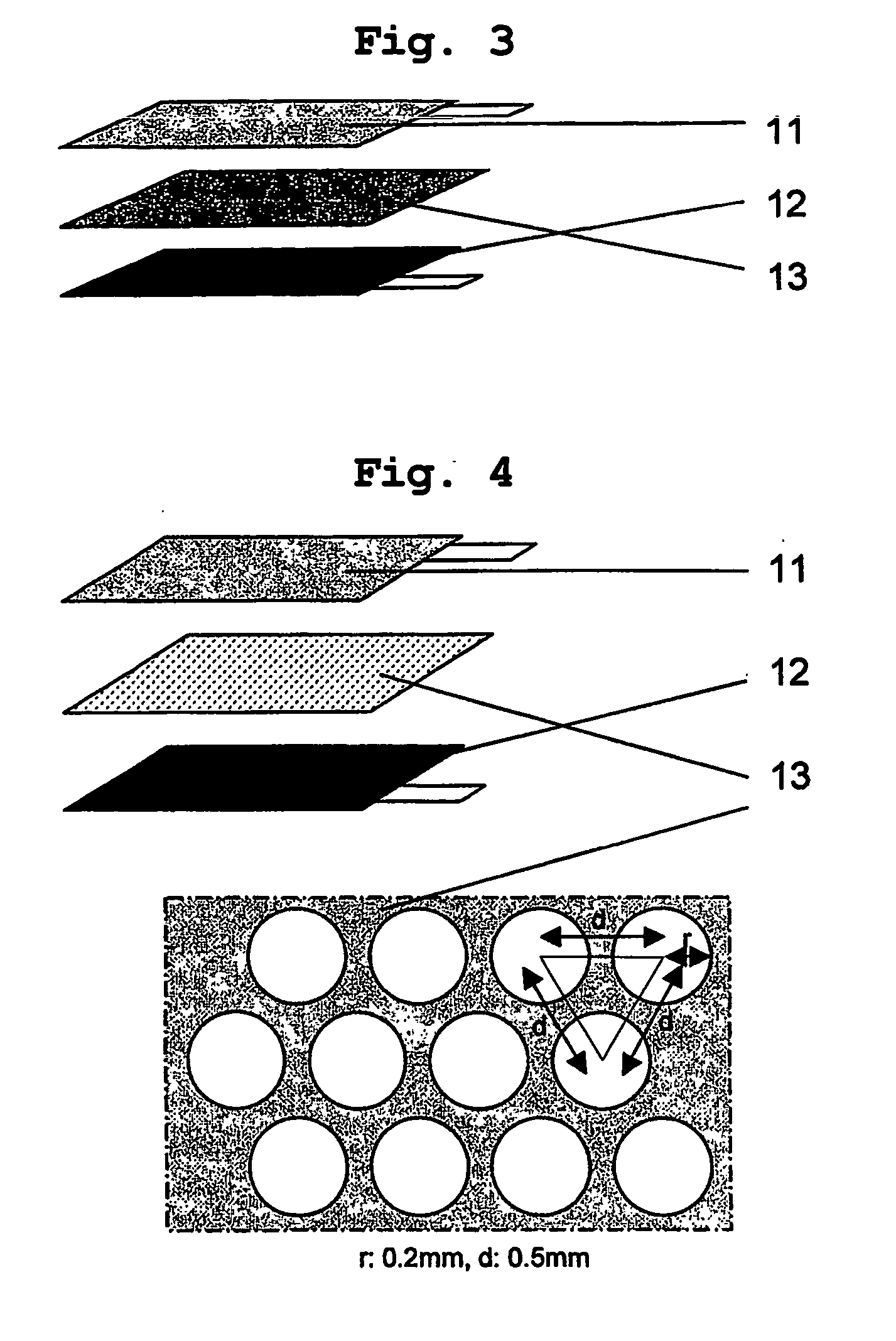Rechargeable lithium battery using separator partially coated with gel polymer
a lithium battery and separator technology, applied in the direction of cell components, final product manufacturing, sustainable manufacturing/processing, etc., to achieve the effect of improving battery life and preventing premature deterioration of electrodes
- Summary
- Abstract
- Description
- Claims
- Application Information
AI Technical Summary
Benefits of technology
Problems solved by technology
Method used
Image
Examples
example 1
[0048] 8 wt % of PVDF was dispersed in acetone to form a gel polymer solution. The gel polymer solution was introduced into a container. A separator mounted on an unwinder in the form of a roll was unwound and moved, while the separator was passed through a rubber roll, to which a gel polymer was transferred from a mesh roll, to coat the separator partially with the patterned gel polymer. Then, the gel polymer partially coated on the separator was dried in a drying zone. After this, the separator was recovered in the form of a roll by a winder. Particularly, the gel polymer-coated area was set to about 50% of total separator area. The pattern has a shape as illustrated in FIG. 4. Further, the coating thickness was set to 1-2 micrometers after drying, and the same separator product as in Comparative Example 1 was used.
[0049] Accordingly, an electrode assembly comprising the same positive and negative electrodes as in Comparative Example 1 separated by a separator partially coated wi...
experimental example 1
[0050] Each of the electrode assemblies obtained from Comparative Examples 1, 2 and 3 and Example 1 was introduced in an aluminum-laminated film 3 (See FIG. 1). To each electrode, an electrolyte composed of ethylene carbonate (EC), ethylmethyl carbonate (EMC) and a lithium salt (LiPF6) was injected in an equal amount. Then, the electrode was enclosed with the aluminum-laminated film and the edges were heat-sealed to provide a battery.
[0051] The batteries obtained as described above were impregnated with an electrolyte for two hours, six hours, one day, two days and one week. After this, each of the batteries was disassembled and weighed to determine the amount of electrolyte impregnation, and then impregnation rates of the batteries were compared.
[0052]FIG. 5 is a graph illustrating the amount of electrolyte impregnation in each example with time. Comparative Example 1 and Example 1 showed similar results, and the amounts of electrolyte impregnation with time in Comparative Exampl...
experimental example 2
[0053] The electrode assemblies obtained from Comparative Examples 1-3 and Example 1 were used to manufacture batteries in the same manner as described in Experimental Example 1, except that the electrode assemblies were impregnated with an electrolyte for a sufficient time. The batteries were compared in terms of cycle property by repeatedly carrying out charge / discharge by using a charge / discharge tester under a charge / discharge condition of 1.0 C / 1.0 C.
[0054]FIG. 6 is a graph illustrating discharge cycles of Comparative Examples 1-3 and Example 1 when charge / discharge is performed under 1 C. As can be seen from FIG. 6, Comparative Examples 2 and 3 and Example 1 showed similar cycle properties, while Comparative Example 1 showed a relatively low value in proportion to increase of cycle number. It is thought that this is resulted from excellent uniform and close contact between an electrode and a separator provided by a battery comprising a gel polymer-coated separator.
PUM
| Property | Measurement | Unit |
|---|---|---|
| thickness | aaaaa | aaaaa |
| thickness | aaaaa | aaaaa |
| area | aaaaa | aaaaa |
Abstract
Description
Claims
Application Information
 Login to View More
Login to View More - R&D
- Intellectual Property
- Life Sciences
- Materials
- Tech Scout
- Unparalleled Data Quality
- Higher Quality Content
- 60% Fewer Hallucinations
Browse by: Latest US Patents, China's latest patents, Technical Efficacy Thesaurus, Application Domain, Technology Topic, Popular Technical Reports.
© 2025 PatSnap. All rights reserved.Legal|Privacy policy|Modern Slavery Act Transparency Statement|Sitemap|About US| Contact US: help@patsnap.com



